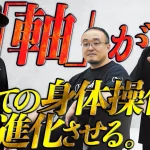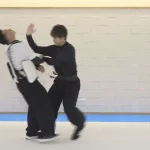text by Grigoris A.Miliaresis
This hasn’t been the case with all Japanese martial arts in Greece: particularly karate (Shotokan, Wado Ryu, Goju Ryu and later Kyokushinkai and Shito Ryu) and judo have been active since the early seventies and to the point where the latter has even produced some world famous exponents (most notable of which, Ilias Iliadis, golden medalist in 2004 Olympics and twice middle weight world champion in 2010 and 2011). There are 96 judo clubs and more than 200 karate dojo in Greece, each with a membership of at least 30 members; this means that on any given day, almost 10.000 Greeks visit a dojo to learn these arts and train in them.
Two other arts that have been proven very successful in Greece have been aikido and ninjutsu, particularly of the Bujinkan style; there are more than 30 dojo of each all over the country, all with connections to the respective authorities in Japan. Aikido in particular has seen a meteoric rise since 1988 when a Greek-American aikido teacher, George Koliopoulos, repatriated from the USA and started a dojo in the center of Athens. This dojo, and its branches have created a network of very high level aikido with at least five major seminars each year, with visiting teachers up to 8th dan and with visiting instructors from the Aikikai Honbu.
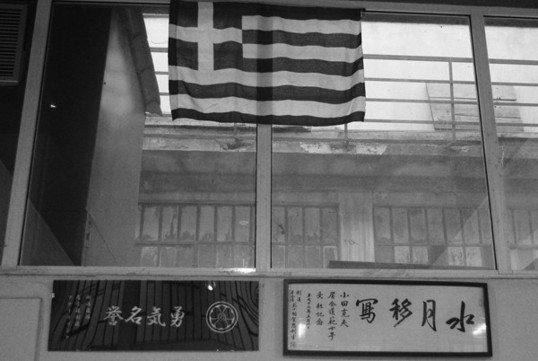
Back in Neo Irakleio, the ten hardcore members participating in this year’s hatsunuki have been lined up and waiting for the initial bow to the dojo kamiza: a Greek flag, a framed tenugui with the dojo’s motto in Japanese (勇気, 名誉 –courage and honor) and another one, a gift from Oda sensei to Furyu. This tenugui was also a gift to Oda sensei on the occasion of his hanshi title award: it is a calligraphy by his teacher, the master swordsman Haga Tadatoshi (iaido/kendo 8 dan hanshi) reading 水月移写; the famous Itto Ryu teaching about how the water reflects the image of the moon without any emotional involvement.
The two maxims are there to help boost the members’ morale. Admiral Drosoulakis knows very well about the need for high morale; having served in the Greek Navy for 30 years and having been both a commander and a strategy planning officer in Greece and abroad, he can understand that sometimes the pressure of training can be very hard, especially in such a challenging day and age and that people need inspiration. This is also one of the reasons that he always asks the dojo members to do what he himself also does: people will only follow if they know that the person leading them is sincere and honest.

After the initial rei, each member performs the Seitei Ipponme, Mae, the first and most basic kata of the Japanese Kendo Federation iaido set. After that, they all perform the complete 12-kata set three times and finally, each member does a small enbu performing five kata from the set. The performances are not always perfect (some of the members have been doing iaido for a year or less) and there are a few technical mistakes that would never stand before an examination committee. But even beginners, people who have never performed alone for an audience, do their kata seriously and earnestly as if their life depends on it; that is, as iaido should be performed. Admiral Drosoulakis performs last and his enbu consists of five Muso Jikiden Eishin Ryu kata; since he is a 4 dan, he has also begun studying this particular ryu together with the ZNKR material, always under Oda sensei’s supervision.
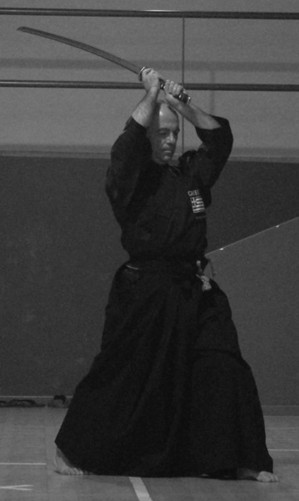
If being a part of the iaido/kendo world puts admiral Drosoulakis in a minority, training in a kobudo ryuha puts him in an even slimmer one. Old school budo dojo are very rare in Greece and most of them are connected to ZNKR iai (Muso Jikiden Eisin Ryu, Muso Shinden Ryu and Shinkage Ryu); besides those there is one Tenshin Shoden Katori Shinto Ryu dojo, one Toda-ha Buko Ryu dojo, one Araki Ryu Kogusoku dojo and a couple of Daito Ryu Aikijujutsu dojo. Overall, less than 100 people train in the old arts in Greece and most of them are people already doing ZNKR iaido and kendo.
The problems are more or less the same with the ones pestering people who only do iaido and kendo: training space and equipment is hard to find (even in Japan, most kobudo ryuha need to have their weapons custom-crafted), Greece doesn’t have good wood for making weapons and craftsmen are very scarce and, worse of all, really qualified teachers are very hard to find outside Japan. The groups mentioned above are all connected to some licensed teacher from abroad; Japanese or otherwise. And since their teacher only visits Greece once or twice per year and they reciprocate the visit once or twice more, their progress is slow. Steady but slow.
You wouldn’t guess all that from the high spirits in the Furyu dojo hatsunuki, though. In the modest party that follows the training, where members drink sake and eat the customary New Year cake (with a coin inside; the person who finds the coin is supposed to have good luck for the rest of the year), conversation is lively and filled with laughter and friendly teasing; nobody hasn’t even changed into their everyday (and much warmer!) clothes. The day after tomorrow (January 2nd is also a holiday in Greece) they will all be in their jobs, wearing their suits and ties facing the challenges of their normal lives and the big problems the country is been up against for the last year or so. But today, for these few hours, their reality is the keikogi, the obi and the hakama and, above all, the sword, the dojo and their sensei.
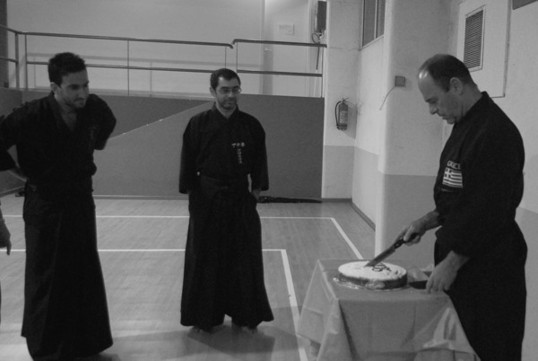
This community, this sense of being part of a culture far and foreign but at the same time close and familiar and this effort to become better both as budoka and as human beings is the cornerstone upon which some Greeks have chosen to build their lives. They know they are only a small part of a ten million society which in its majority cares identifies “sportsmanship” as “sitting at home and watching football on TV”. But time is on this tiny minority’s side: everyday, more people come to the dojo door and cross the threshold. And every such person is a small victory for people like admiral Drosoulakis and Japanese budo.
The time is 10:00 and we are out on the street. The sun is up but it’s still cold; 7-8 C, maybe less. Admiral Drosoulakis locks the dojo and the members greet each other, pick their stuff and start for their homes, some of which are more than an hour away. Traffic is still scarce and from passing cars, drivers and passengers look curiously at these people carrying gym backs and sword cases; the expressions on their faces seem to say “What on earth are these people doing this early on New Year’s day?” Could they really understand even if they were told? Probably not…
Rerated article:Hatsunuki: the first sword-drawing of the year Part.1
 About the author
About the author
Grigoris Miliaresis has been practicing Japanese martial arts since 1986. He has dan grades in judo, aikido and iaido and has translated in Greek over 30 martial arts’ books including Jigoro Kano’s “Kodokan Judo”, Yagyu Munenori’s “The Life-Giving Sword”, Miyamoto Musashi’s “Book of Five Rings”, Takuan Shoho’s “The Unfettered Mind” and Donn Draeger’s “Martial Arts and Ways of Japan” trilogy. Since 2007 his practice has been exclusively in classic schools: Tenshin Buko-ryu Heiho under Ellis Amdur in Greece and Kent Sorensen in Japan and, since 2016, Ono-ha Itto-ryu under 17th headmaster Sasamori Takemi and 18th headmaster Yabuki Yuji.
http://about.me/grigorismiliaresis




